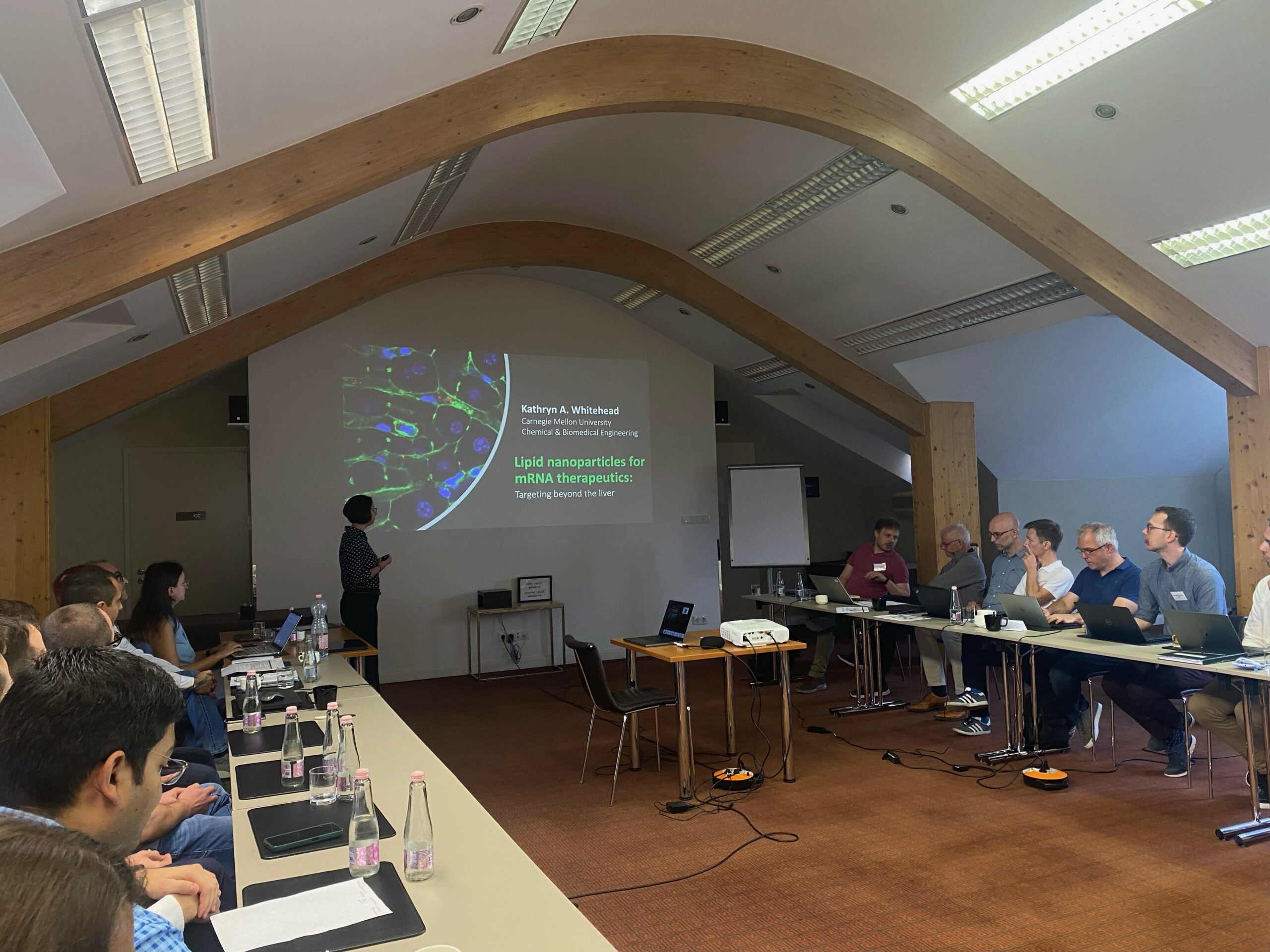Last week, the GENEGUT consortium gathered for the project’s 3rd General Assembly meeting. This time again in-person, hosted by GENEGUT partner CarboHyde in Budapest, Hungary. The two-day meeting was a great opportunity to discuss the significant progress of GENEGUT’s first year and prepare for the next steps towards the development of an RNA-based therapy for Crohn’s Disease.
A year of GENEGUT: steady steps in research
A lot has happened in the first year of GENEGUT – and a few new faces joined the consortium. Just over 30 attendees from all 9 GENEGUT partners got together to hold this General Assembly meeting. Joined also by one of the project’s Scientific Advisory Board (SAB) members, Prof. Katie Whitehead (CMU), the meeting was set out for fruitful scientific discussions on RNA-based therapeutics and updates across all work packages (WP).
After kicking-off the day with a team-building activity, day one was dedicated to updates from the management side of the project and all its scientific work packages. The WP leads and early-career researchers presented their progress, interaction with other WPs, challenges and next steps. “I think we have made significant progress over our first year and I am confident we can build on this over the coming months.” – concluded GENEGUT coordinator Prof. Caitriona O’Driscoll (UCC). In the afternoon, the GENEGUT consortium was joined online by Prof. Dr. Csóka Ildikó from the University of Szeged, Hungary, for an interesting focus session on regulatory basics for nucleic acid APIs.
Work package presentations: plans and progress
WP1: Synthesis, formulation and characterisation of
therapeutic RNA-based nanoparticles (Caitriona O’Driscoll (UCC), Milo Malanga, CarboHyde, Ana Francisca Soares (UCC), Miguel Ramôa (UCC))
- Synthesis of biomaterials
- Development of library of cyclodextrin based biomaterials
WP2: Cellular specificity and mechanism (Per Artursson, Madlen Hubert, UU)
- Development of organoids
- Focus on function and ADME factors
WP 3: Formulation development for regional specificity (Vincent Jannin (Lonza) , Elisa Millet (Lonza); Sophia Hoffmann (UCC), Joey O’Shea (UCC))
- Development of capsule-based system for regional delivery to terminal ileum
- Regulatory compliance, scalability, manufacturing factors
WP4: Proof of efficacy under diseased conditions (Silvia Melgar (UCC), Klara Martinovic (UCC), Bruno Sarmento (i3S) Patrick O’Dwyer, UCC)
- Pre-clinical assessment of efficacy
- Development of PBBM model
- Validation of pig model, proof of efficacy in 3D multi-cellular model
WP5: Early health technology assessment and regulatory
preparedness (Dyfrig Hughes (BU))
- Market projections
- Regulatory + HTA preparedness
- Ethical and social considerations
Science communication and beyond
Led by the team at accelopment, the morning of day two was dedicated to the communication, dissemination and exploitation of the project, highlighting also GENEGUT’s close collaboration with EFCCA in bringing the project closer to patients. With a focus session on innovation management, the consortium made the first steps in paving the way for the successful commercial and non-commercial exploitation of GENEGUT results.
We were honoured to have SAB member Prof. Katie Whitehead on site, who provided valuable input throughout the meeting and inspiring insights into her group’s research with a talk and Q&A session on lipid nanoparticles for mRNA delivery to the pancreas.
The 3rd GENEGUT General Assembly was closed with an early-career researchers club, and a second session of accelCH’s science communication transferable skills training, focusing on video production and storytelling techniques.








